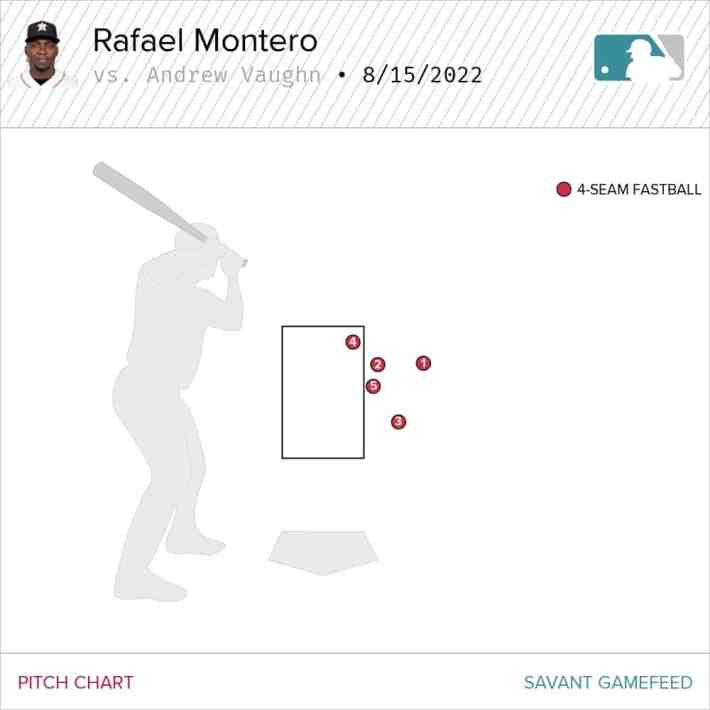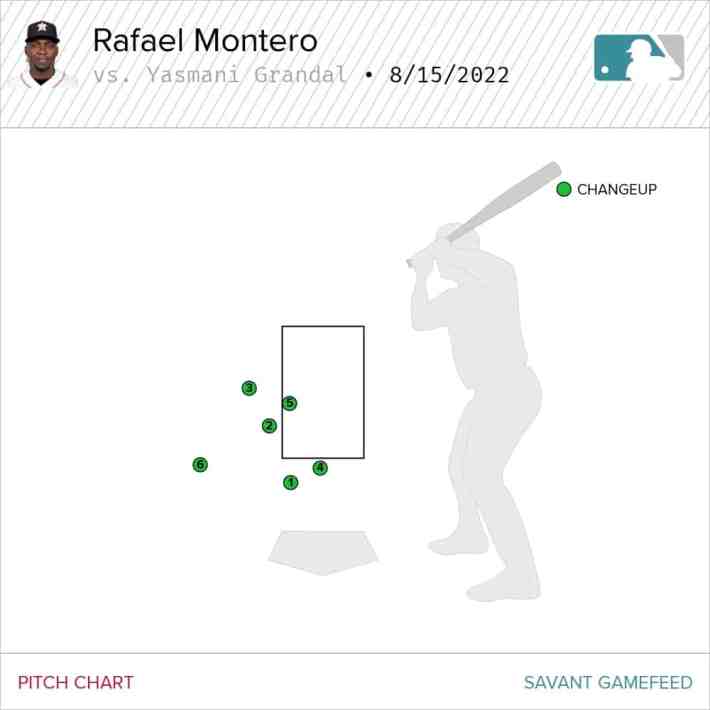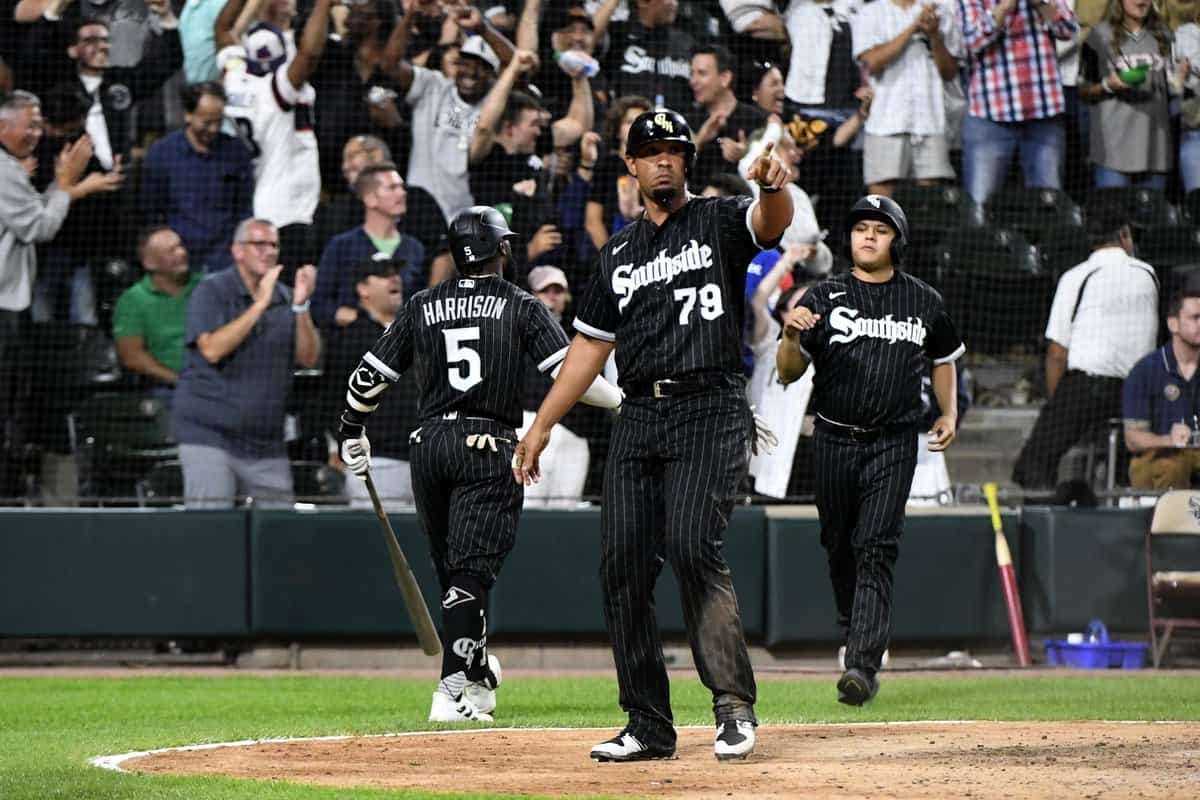With every terrific White Sox win comes the question of whether the White Sox have turned a corner.
A sweep of the Detroit Tigers, followed by an inspiring late-game rally in the opener against the Houston Astros have Monday, would kinda be what it looks like, at least when accounting for the absences of Tim Anderson and Luis Robert. The pitching has been sturdy, and while the offense is still sputtering, it's more competent and capable of stringing together productive plate appearances for crooked numbers.
After 4½ months of mediocrity, though, I've mentally tabled the idea of corner-turning and have steeled myself for a meat grinder to the pennant. With only two games separating three teams, the pursuit is more micro than macro. What did the White Sox do today? What did the Guardians and Twins do today? Then repeat.
If I were trying to identify a potential turning point, I wouldn't have confidence in giving Monday that particular stamp, because at the heart of the White Sox's eighth-inning rally were some really curious pitch selections by Rafael Montero.
Montero faced five batters and didn't retire a single one, and when you look at his pitch mix, it appeared like he was mailing it in. Or almost using it like a spring training appearance. Sequencing took a back seat to executing the same pitch over and over again.
Andrew Vaughn saw five pitches, and all were fastballs outside. The second one was a couple inches off the plate, but Chris Conroy called it a strike, much to Vaughn's chagrin.

Vaughn had to be on guard for a wide plate, but Montero didn't really indulge the luxury afforded to him by exploring a vulnerability to inner-half stuff. Instead, he kept hammering the outside corner with heat. In his defense, when his fourth attempt blew by Vaughn's bat at 97 to even the count at 2, maybe he and Martin Maldonado didn't want to risk speeding up his bat with something slower.
Joke's on them, because it turns out that Vaughn is a gifted enough hitter to eventually figure solve one problem presented to him on loop.
Eloy Jiménez also saw the same pitch three times. Montero threw him all sinkers, but the mode of attack was a little more nuanced, at least from the results.

Jiménez swung at all three pitches and whiffed at the first two, including a first-pitch two-seamer that ran several inches inside. Montero then got a swing under a high sinker, although Maldonado again called for one running inside.
Montero then returned to Maldonado's mitt in Jiménez's kitchen, throwing nearly an exact duplicate of the first one that tied Jiménez up so severely. This time, Jiménez pulled the hands even further in and kept the resulting batted ball fair.
Thanks to all manner of injuries, we've only caught fleeting glimpses of the well-rounded hitting ability that made Jiménez a consensus top-five prospect. In most cases, you'd rather not have a guy expanding the strike zone three to four inches toward his person, and Jiménez's first swing looked like one from a guy whose plan was easily exploitable or nonexistent.
The third swing looked like a guy who knows how to set up a pitcher, the way Miguel Cabrera homered on pitches no other hitter could keep fair. We've seen plenty of Miguel Cabrera over the years, and Jiménez is no Miguel Cabrera, but his scouting reports have likened the two before. From 2019:
For as long as he’s been a prospect, Jimenez has projected as an elite hitter who can hit for average and power. Five seasons into his minor league career, he’s done nothing to dissuade evaluators in that regard. He has at least double-plus power to all sectors now, and he hit a system-best 22 home runs in 2018. He has shown he can hit the ball out to all fields. His coiled lower half and rubber band-like takeaway in his swing remind some evaluators of Miguel Cabrera. He also shows an impressive knack for learning how pitchers plan to attack him, and then adjusting to the strategy within the same game. These qualities should allow Jimenez to be a plus hitter with plus-plus power.
If you can't count on Jiménez to develop above-average plate discipline in the traditional sense, then the next best thing is a Jiménez whose plate coverage combines with an understanding of how he's being attacked to make fans give him the benefit of the doubt with his decision-making.
Speaking of taking: To cap it off, here's Montero walked Yasmani Grandal on six pitches, all of them changeups. Grandal didn't swing at any of them.

Why did Montero take such a shy approach to Grandal, when Grandal hasn't been thumping pitches of any sort, and has especially struggled with velocity? Beats me. I'd imagine the White Sox were similarly stumped, in the sense that it should've been more complicated.
Anyway, that walk to Grandal loaded the bases and forced Montero to throw pitches in the zone to Yoán Moncada. He threw 97 down the middle, Moncada lined it to center, and the White Sox scored a sorely needed win in a series that doesn't get any easier from here.
Then again, the White Sox were the last team to beat Justin Verlander this season, and with Dylan Cease taking the mound on their side, they're particularly well equipped to keep breaking brains.





